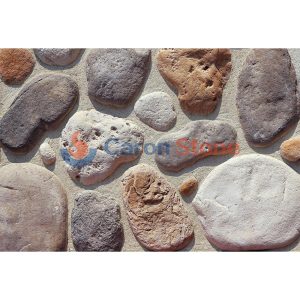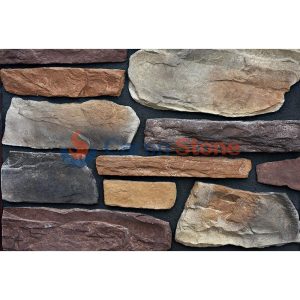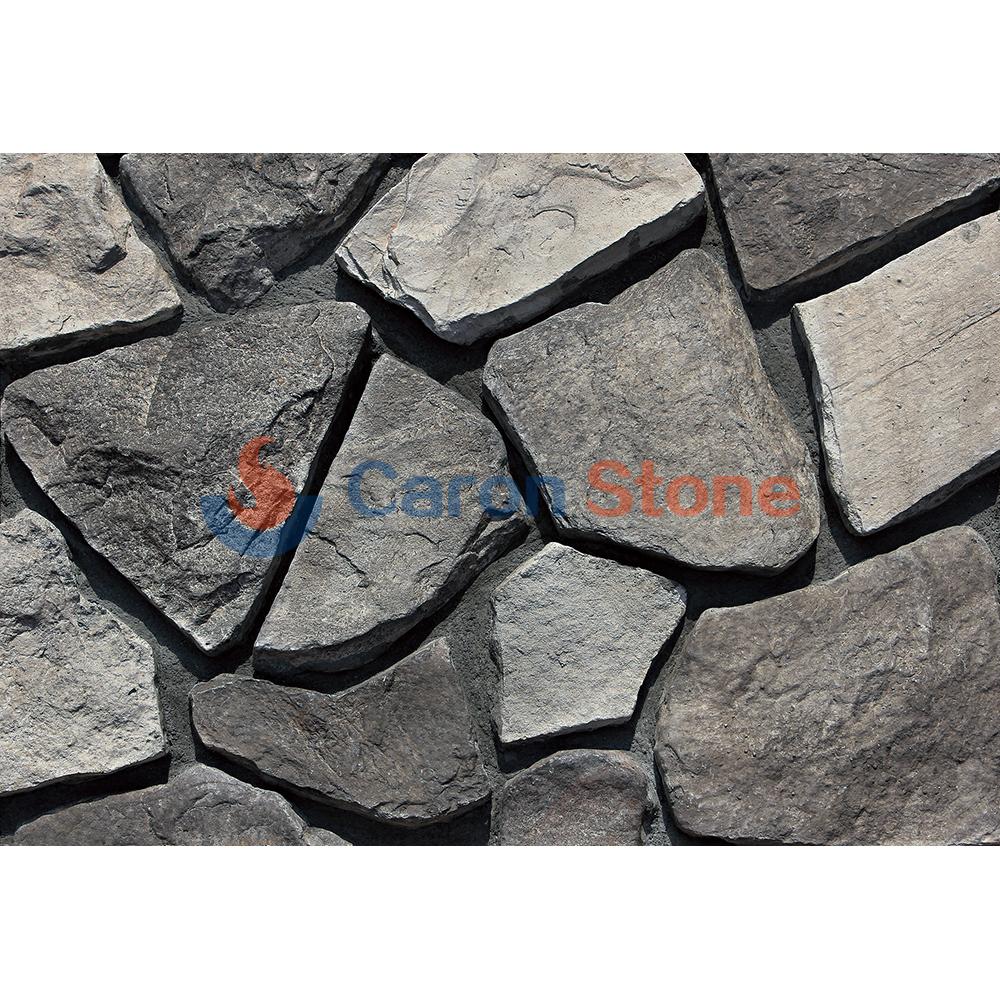In the process of human exploration of building materials, natural stone has always won favor with its elegant texture and solid characteristics. But as science and technology advance and environmental preservation takes front stage, artificial stone materials have progressively surfaced and grown in favor in building and home decoration. Apart from mimicking the look of genuine stone, artificial stone boasts better stability and design freedom. This article will take you to an in-depth understanding of the production process of artificial stone materials, explore how technological progress promotes the development of this field, and show possible innovation directions in the future.

GB-E01 China faux artificial rounded river rock pebble wall stone
Evolution of the manufacturing process
1. Initial process: basic construction
Artificial stone materials were first produced early, and the first technique was somewhat simplistic, mostly depending on basic mixing and curing technologies. Early artificial stone materials usually used by-products of natural stone such as marble powder and granite powder, mixed with synthetic resin, and then formed by pouring or pressing. Though the production technique at this level is simple, it possesses the first qualities of fake stone, including solid texture and some degree of attractiveness.
2. High-tech progress: refinement and customization
After entering the 21st century, with the advancement of science and technology, the production process of artificial stone has undergone a qualitative leap. More sophisticated and tailored techniques included in modern artificial stone production technologies allow artificial stone to not only achieve or even surpass the effect of natural stone in appearance but also excel in functioning.
1) Composite material technology
The implementation of composite material technology offers fresh opportunities for the manufacturing of synthetic stone. To create several kinds of fake stone materials, this technology combines and compounds several ingredients (such as resin, mineral powder and other additions). Composite material technology not only improves the strength and wear resistance of artificial stone, but also enables artificial stone to have more color and texture options, thus meeting higher-level design requirements.
2) Nanotechnology
The application of nanotechnology is also a major advancement in the field of artificial stone. While enhancing its surface gloss and color homogeneity, the wear resistance and stain resistance of artificial stone can be much raised by including nano-scale particles during the manufacturing process. The application of this technology makes artificial stone materials not only have superior physical properties, but also more visually beautiful.
3) Environmental protection technology
With the enhancement of environmental awareness, artificial stone production technology is gradually moving towards environmental protection. To lessen their effects on the environment, several firms have started using low-emission production techniques and recyclable materials. For example, some manufacturers use recycled stone powder and environmentally friendly resin to produce artificial stone materials, which not only reduces production costs but also reduces resource waste.
Technological progress’s driving force
1. design and creativity
Technological progress provides a broad space for the design and innovation of artificial stone. Advanced computer-aided design (CAD) and digital technologies let designers create intricate textures and patterns, even copying the most minute natural elements. From commercial space to home decoration, artificial stone is omnipresent thanks in major part to design freedom.
2. Improvement of production efficiency
Another crucial feature of technical development is the increase of manufacturing efficiency. Automated production lines and sophisticated manufacturing technologies have made artificial stone material creation more exact and efficient. This not only improves the stability and consistency of production, but also greatly reduces production costs. Large-scale manufacturing made possible by modern production techniques guarantees that every piece of synthetic stone material may satisfy high criteria in terms of quality.
3. Functional improvement
The best feature of contemporary artificial stone materials is their functionality. As technology developed, artificial stone’s usefulness has been steadily raised. For example, the application of antibacterial technology makes artificial stone materials perform well in sanitary environments, while the improvement of fireproof and waterproof properties also makes artificial stone widely used in more fields. These practical use-oriented functional enhancements not only satisfy needs but also increase the general competitiveness of artificial stone materials.
Future Outlook
Looking ahead, artificial stone materials’ technological development and manufacturing technique still have great promise. Artificial stone in the future might reach more innovations in environmental performance, intelligent application and individualized design as science and technology develop constantly. For example, in the future, artificial stone with self-repairing function may appear, which can automatically repair small scratches and damage during use; there may also be more environmentally friendly production materials and processes to reduce dependence on natural resources and burden on the environment.

GB-S01 China artificial cultured stone shadow rock wall cladding panel ledgestone veneer
In general, the production process and technological progress of artificial stone materials show the broad prospects of this field. Artificial stone materials have not only achieved great development in look and performance but also shown great potential in design and environmental protection from the first basic process to the current high-tech application. Artificial stone materials will keep encouraging innovation in the sectors of architecture and interior design with their special benefits, thereby giving more beauty and utility to our living environment. As science and technology progress constantly. Whether it is modern home or commercial space, artificial stone materials will continue to play an important role and become a beautiful landscape of future design.





